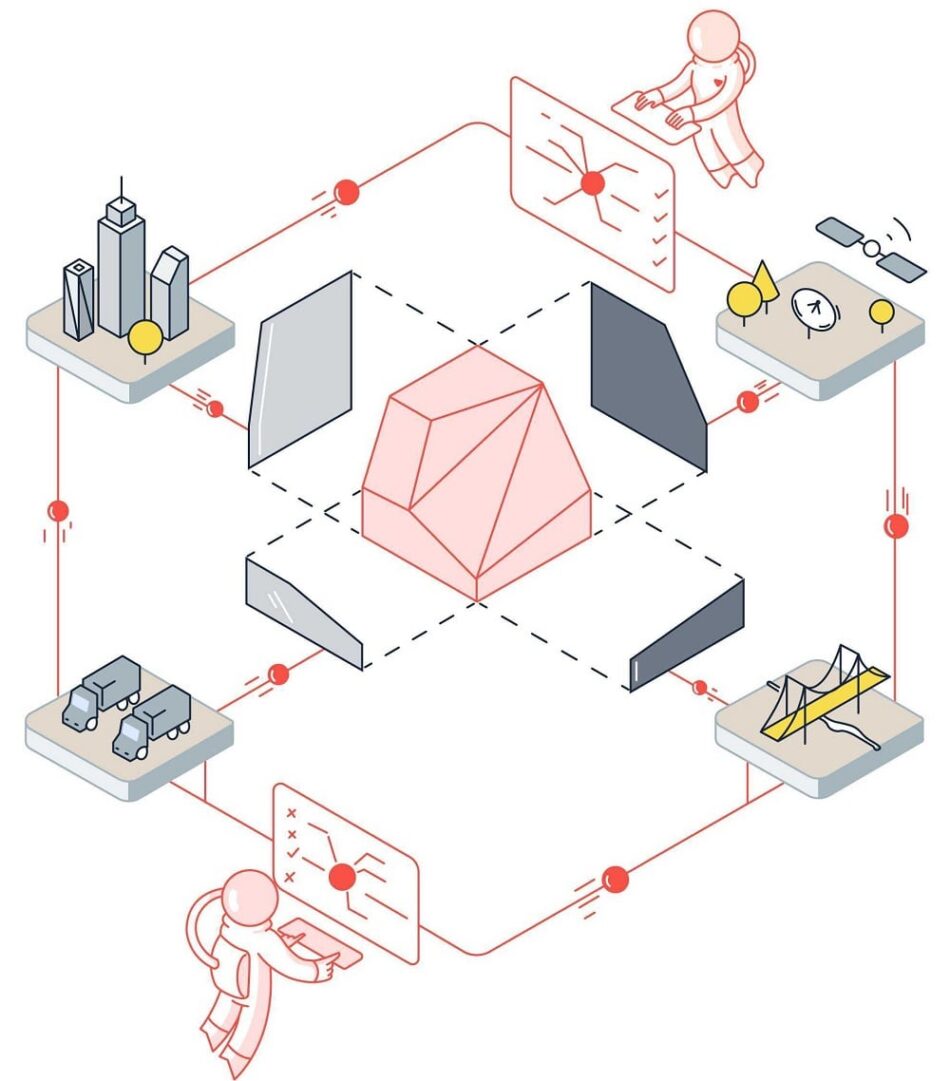In the Architecture, Engineering, and Construction (AEC) industry, the efficient exchange of information among different software systems is critical for successful project outcomes. Interoperability solutions enable seamless communication and data exchange, facilitate collaboration, and improve overall project efficiency. This article aims to provide a comprehensive understanding of interoperability in the AEC industry, explore key solutions available to firms, highlight the role of Building Information Modeling (BIM), and discuss the benefits and challenges of adopting interoperability strategies. Additionally, we will introduce e-verse, a leading company that provides cutting-edge interoperability services to AEC firms.
Understanding Interoperability in the AEC Industry
Interoperability refers to the ability of different software applications and systems to communicate, exchange data, and interpret information seamlessly. Interoperability is crucial in the AEC industry, which involves multiple disciplines working on complex projects. Various challenges can arise without effective interoperability, such as data silos, duplication of efforts, errors in data translation, and limited collaboration between project stakeholders.
When AEC software systems lack interoperability, it becomes difficult for architects, engineers, contractors, and other professionals to share project information smoothly. For instance, data created in a CAD (Computer-Aided Design) application may not be easily accessible or compatible with the project management software used by the construction team. This can lead to delays, cost overruns, and decreased project quality.
Key Interoperability Solutions for AEC Firms
Middleware Solutions
Middleware acts as a bridge between different software applications, enabling them to exchange data and communicate effectively. It helps overcome the incompatibility issues that often arise in diverse AEC software environments. Middleware solutions can translate data between formats, synchronize real-time information, and facilitate seamless collaboration across the project lifecycle.
Open Standards
Open standards play a pivotal role in promoting interoperability. Industry-wide adoption of open standards ensures that software applications adhere to common rules and formats, making data exchange more straightforward. Some well-known open standards in the AEC industry include Industry Foundation Classes (IFC) and Construction Operations Building Information Exchange (COBie).
Integrated Platforms
Integrated platforms offer a comprehensive solution by combining various AEC functions into one system. These platforms are designed to work seamlessly together, reducing the need for complex data integrations. By providing a unified environment, integrated platforms enhance collaboration, reduce errors, and streamline workflows for AEC firms.
Cutting-Edge Developments
The field of interoperability is constantly evolving, and cutting-edge developments are continually being made to address new challenges and opportunities. One such development is Application Programming Interfaces (APIs) that allow software applications to communicate directly. Additionally, cloud-based solutions and advanced data exchange protocols transform how AEC professionals collaborate.
The Role of BIM in Enhancing Interoperability
Building Information Modeling (BIM) has emerged as a game-changer for achieving interoperability in the AEC industry. BIM is a digital representation of the physical and functional characteristics of a building or infrastructure project. Its role in enhancing interoperability is multifaceted:
Centralized Information Repository
BIM is a centralized repository for all project-related data, including design, construction, and operational information. As a result, all stakeholders can access the same information, reducing data duplication and inconsistencies.
Collaboration and Coordination
BIM facilitates collaboration among multidisciplinary teams by allowing them to work on the same model simultaneously. This real-time collaboration improves coordination and reduces clashes between building systems, leading to more efficient project delivery.
Interoperability through IFC
BIM interoperability is often achieved through IFC, an open standard for exchanging BIM data. IFC ensures that different software applications can exchange information seamlessly, enabling smooth data flow throughout the project lifecycle.
Clash Detection and Clash Resolution
BIM’s clash detection capabilities identify conflicts between building elements early in the design process. This proactive approach helps prevent issues during construction, saving time and resources.
Benefits of Adopting Interoperability Solutions
The adoption of interoperability solutions offers numerous benefits to AEC firms:
Improved Project Efficiency
Efficient data exchange and collaboration lead to smoother project workflows, reducing delays and speeding up project delivery. Interoperability solutions enable teams to work cohesively, optimizing the entire construction process.
Cost Savings
Minimizing errors, rework, and miscommunications results in cost savings for AEC firms. By streamlining data exchange, interoperability solutions prevent costly mistakes and enhance project cost-effectiveness.
Increased Collaboration
Interoperability fosters collaboration between project stakeholders. With information readily accessible to all team members, decision-making becomes more informed and efficient.
Enhanced Quality of Output
By promoting accurate data exchange, interoperability solutions contribute to the overall quality of the project. Better coordination and clash detection result in superior design and construction outcomes.
Challenges and Best Practices in Implementing Interoperability Solutions
While interoperability offers significant advantages, implementing such solutions can present challenges for AEC firms:
Software Compatibility
Different software applications may not inherently support interoperability standards, requiring firms to find suitable middleware or integrated platforms to facilitate data exchange.
Data Security and Privacy
Interoperability involves sharing sensitive project information between stakeholders raising concerns about data security and privacy. Implementing robust security measures is essential to protect sensitive data.
Training and Adoption
Introducing new interoperability solutions requires training for employees and stakeholders. Firms must promote the adoption of these solutions to realize their benefits fully.
Maintaining Data Consistency
Ensuring data consistency across various software applications is crucial for successful interoperability. Regular data audits and adherence to data standards are vital for maintaining accuracy.
e-verse: Empowering AEC Firms with Interoperability Solutions
e-verse is a leading company that provides cutting-edge interoperability services to AEC firms. With a strong focus on middleware solutions, e-verse enables seamless data exchange and collaboration across the AEC industry. Their expertise in implementing open standards and integrated platforms ensures that AEC professionals can work efficiently and effectively, leading to successful project outcomes.
Conclusion
Interoperability solutions are integral to the success of AEC firms in the modern construction landscape. By understanding the significance of interoperability, exploring key solutions, harnessing the power of BIM, and acknowledging the benefits and challenges, AEC professionals can make informed decisions to enhance collaboration, efficiency, and project quality. With companies like e-verse leading the way, the AEC industry is poised for a future of seamless data exchange and effective collaboration, ultimately driving innovation and growth.

